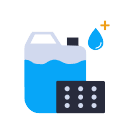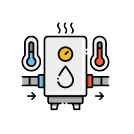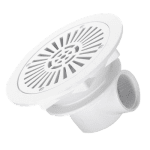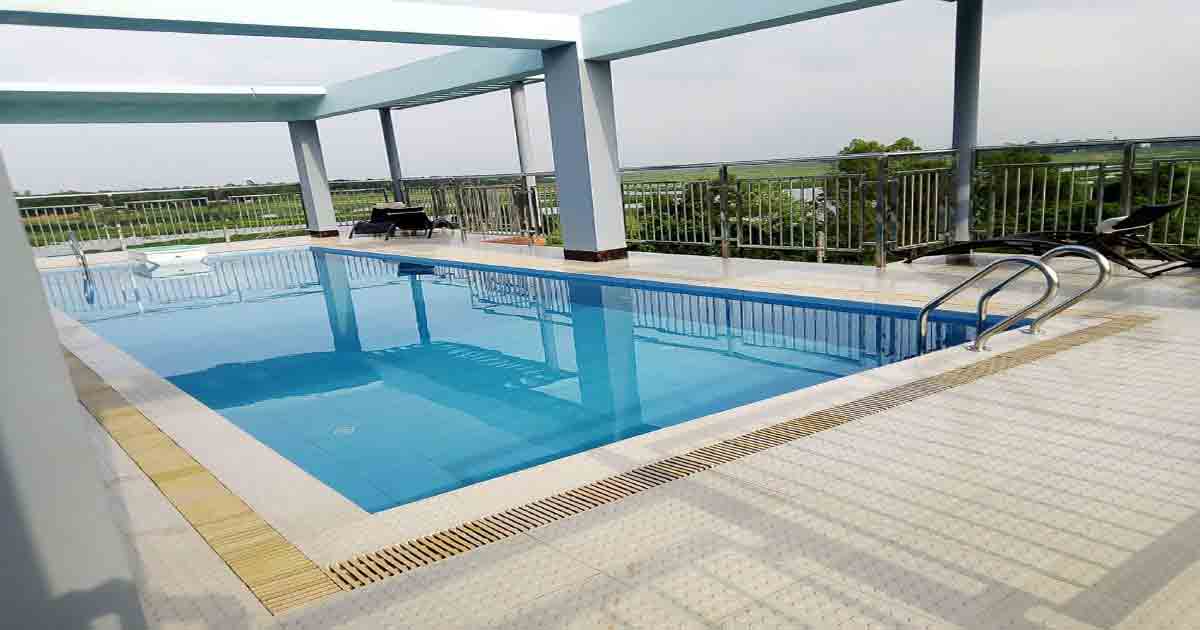Swimming Pool Maintenance
Adroit Swimming Ltd: Premier Swimming Pool Maintenance Company in Bangladesh
At Adroit Swimming Ltd, we dive into a world where crystal-clear waters and pristine pools are not just a luxury but a necessity. As the leading swimming pool maintenance company in Bangladesh, we take pride in our unwavering commitment to delivering top-tier service, unmatched expertise, and unparalleled dedication to our valued clients.
Our Services:
- Comprehensive Maintenance Solutions: From routine cleaning and water testing to equipment inspection and repair, our team of skilled technicians ensures that your pool remains in optimal condition year-round.
- Professional Cleaning Services: Our meticulous cleaning services guarantee a sparkling clean pool that beckons with its clarity and purity, providing a safe and enjoyable swimming experience for you and your loved ones.
- Efficient Equipment Maintenance: We specialize in the upkeep and repair of pool equipment, including pumps, filters, heaters, and more, maximizing their efficiency and longevity to keep your pool operating smoothly.
- Water Quality Management: Utilizing advanced testing methods and premium-quality chemicals, we maintain precise water chemistry to safeguard the health and safety of swimmers while preserving the integrity of your pool.
Why Choose Adroit Swimming Ltd:
- Unrivaled Expertise: With years of experience in the industry, our team possesses the knowledge, skills, and technical prowess to address any pool maintenance challenge with precision and proficiency.
- Customer-Centric Approach: We prioritize customer satisfaction above all else, striving to exceed expectations by delivering personalized service, transparent communication, and timely solutions tailored to your unique needs.
- Commitment to Excellence: At Adroit Swimming Ltd, excellence is not just a goal but a standard that permeates every aspect of our operations. We go above and beyond to ensure that every pool we touch radiates with beauty, cleanliness, and functionality.
- Innovation and Sustainability: Embracing innovation and sustainable practices, we stay at the forefront of industry trends and eco-friendly solutions, minimizing our environmental footprint while maximizing the longevity and efficiency of your pool.
Experience the epitome of swimming pool maintenance excellence with Adroit Swimming Ltd. Trust us to transform your pool into a shimmering oasis of tranquility and enjoyment, where every dip is a refreshing escape into pure bliss.
Swimming pool maintenance is essential for ensuring the longevity, safety, and cleanliness of your pool. Proper maintenance not only enhances the enjoyment of swimming but also prevents costly repairs and ensures the pool remains a healthy environment for all users. This comprehensive guide covers the key aspects of swimming pool maintenance, including regular tasks, troubleshooting common issues, and tips for efficient upkeep.
Regular Maintenance Tasks (Swimming Pool Maintenance)
- Skimming and Cleaning: Removing debris such as leaves, insects, and other floating particles from the pool surface using a skimmer net. This should be done daily or as needed to prevent clogging of filters and ensure water clarity.
- Vacuuming: Weekly vacuuming of the pool floor and walls helps remove dirt, sediment, and algae buildup. Manual vacuuming or automatic pool cleaners can be used depending on the pool size and preference.
- Brushing: Brushing the pool walls and tile line helps prevent algae and calcium buildup. Use a brush suitable for your pool’s surface (concrete, fiberglass, vinyl) and brush thoroughly at least once a week.
- Emptying Skimmer Baskets and Pump Strainer Basket: Regularly check and clean out skimmer baskets and pump strainer baskets to maintain proper water flow and prevent strain on the filtration system.
- Water Level Maintenance: Monitor and maintain the water level to ensure proper skimming and filtration. Add water as needed using a garden hose to keep it at the recommended level.
- Water Testing and Chemical Balance: Regularly test the pool water using a test kit or test strips to maintain proper chemical balance. Key parameters to monitor include pH levels, chlorine or other sanitizers, alkalinity, and calcium hardness.
- pH Levels: Maintain pH between 7.2 and 7.8 to ensure comfort for swimmers and effectiveness of sanitizers.
- Chlorine: Keep chlorine levels between 1.0 and 3.0 parts per million (ppm) to disinfect the water and control algae growth.
- Alkalinity and Calcium Hardness: Adjust alkalinity (80-120 ppm) and calcium hardness (200-400 ppm) levels to prevent corrosion of pool surfaces and equipment.
- Shock Treatment: Periodically shock the pool water to oxidize organic contaminants and restore chlorine effectiveness. This is especially important after heavy pool usage, rainfall, or when water appears cloudy or has a strong chlorine odor.
- Backwashing the Filter: If you have a sand or DE (diatomaceous earth) filter, backwash it as recommended by the manufacturer to remove trapped debris and maintain filtration efficiency.
Troubleshooting and Problem Solving (Swimming Pool Maintenance)
- Algae Growth: Green, yellow, or black algae can be prevented by maintaining proper water circulation, filtration, and chemical balance. If algae develop, brush and vacuum affected areas, shock the pool, and ensure adequate sanitizer levels.
- Cloudy Water: Cloudiness can result from poor filtration, improper chemical balance, or insufficient sanitizer levels. Test and adjust pH, chlorine, and alkalinity levels, and consider shock treating the pool if necessary. Ensure the filter is clean and operating correctly.
- Low Water Flow: Check for clogged skimmer baskets, pump strainer baskets, or filters. Clean or backwash the filter as needed and inspect pump and filter for any mechanical issues.
- Leaks: Monitor water level fluctuations and inspect the pool, pump, and plumbing for signs of leaks. Contact a professional if you suspect a leak to prevent further damage.
- Staining: Stains on pool surfaces can result from metals or organic materials. Identify the cause (e.g., metal in water, organic debris) and use appropriate stain removers or treatments.
Seasonal Maintenance and Winterization (Swimming Pool Maintenance)
- Winterization: In colder climates, winterize the pool before freezing temperatures arrive. Lower water level, drain equipment, and add winterizing chemicals to prevent damage from freezing water.
- Opening the Pool: In spring, remove winter covers, clean and store them properly. Clean and inspect the pool, refill to normal level, and balance chemicals before resuming regular use.
Additional Tips for Efficient Maintenance (Swimming Pool Maintenance)
- Regular Inspections: Inspect pool equipment, including pumps, filters, heaters, and automated systems, regularly for signs of wear or malfunction.
- Consistent Schedule: Establish a routine maintenance schedule and stick to it. Consistent maintenance prevents problems before they occur and reduces the overall workload.
- Professional Service: Periodically schedule professional pool service for thorough inspections, equipment maintenance, and expert advice on optimizing pool operation.
Owning a swimming pool provides a refreshing escape and an excellent way to relax, exercise, and entertain. However, to keep the pool clean, safe, and functional, regular maintenance is essential. Effective pool maintenance covers everything from water chemistry and filtration to seasonal care and preventive measures. Here’s a guide to maintaining your pool year-round for crystal-clear water and a pool that lasts.
1. Balancing Water Chemistry
One of the most critical aspects of pool maintenance is keeping the water chemistry balanced. Proper chemical levels ensure water clarity, prevent algae and bacteria growth, and protect pool surfaces and equipment. The primary elements to monitor include:
- pH Level: Ideal pH should range between 7.4 and 7.6. When pH is too high, water becomes cloudy and scaling can occur on surfaces and equipment. If pH is too low, the water becomes acidic, potentially causing eye irritation and corrosion.
- Chlorine: Chlorine sanitizes the water by killing bacteria and algae. Free chlorine levels should remain between 1 and 3 ppm (parts per million). Regular testing ensures proper sanitization without over-chlorinating, which can cause skin and eye irritation.
- Alkalinity: Total alkalinity should be maintained between 80-120 ppm to stabilize pH levels. Low alkalinity causes rapid pH fluctuations, while high levels can make water cloudy and pH difficult to adjust.
- Calcium Hardness: Proper calcium levels (200-400 ppm) protect plaster surfaces and equipment from corrosion. High calcium levels can cause scaling on pool surfaces.
Test water at least once a week, using either test strips or a pool testing kit, to monitor these levels. Adjusting them as needed keeps the water balanced and extends the life of pool surfaces and equipment.
2. Effective Filtration and Circulation
A well-maintained filtration system is essential to keep the water clean and free from debris. Pool filters, such as sand, cartridge, or diatomaceous earth (DE) filters, trap impurities that can cloud the water or create algae growth.
- Sand Filters: Backwash sand filters once every 1-2 weeks to keep them efficient. Sand needs replacement approximately every 3-5 years.
- Cartridge Filters: Cartridge filters should be cleaned with a hose every 1-2 weeks and replaced every 1-2 years for optimal performance.
- DE Filters: DE filters should be backwashed regularly and recharged with fresh DE powder. These filters offer fine filtration and need regular maintenance to stay effective.
In addition to filtration, ensure proper water circulation by running the pool pump for at least 8-12 hours a day during peak swimming season. Good circulation prevents stagnation, distributes chemicals evenly, and reduces the risk of algae growth.
3. Brushing and Vacuuming
Regularly brushing pool walls, steps, and corners prevents algae buildup and helps remove debris that settles on surfaces. Use a pool brush suitable for your pool type; for example, use soft-bristle brushes for vinyl or fiberglass and stiffer ones for concrete surfaces.
Vacuuming the pool weekly removes debris, dirt, and small particles that the filter might miss. Options include manual vacuums, robotic cleaners, and automatic suction cleaners. Robotic vacuums are highly effective for larger pools, while automatic suction cleaners are budget-friendly and good for regular maintenance.
4. Skimming and Leaf Removal
Skimming the water surface daily with a net is essential for removing leaves, bugs, and debris that can accumulate on the water. This prevents these items from sinking to the bottom, where they’re harder to remove and can affect water quality.
Installing a pool cover when the pool is not in use also minimizes debris and reduces water evaporation. Covers are particularly useful in windy areas or for pools surrounded by trees, helping to reduce daily maintenance.
5. Shock Treatments
Shocking the pool means adding a high concentration of chlorine to destroy contaminants and organic waste. It’s typically done once a week, but you may need to shock more often after heavy pool use, storms, or noticing cloudy water or algae growth.
- Types of Shock: Chlorine-based shock is common for killing bacteria, while non-chlorine shock can oxidize organic contaminants without affecting chlorine levels.
- Frequency: Regular shocking helps maintain water clarity and prevents algae. Always follow shock product instructions, and keep the pool out of use for the recommended time post-treatment.
6. Managing Algae Prevention
Algae can quickly cloud the water and spread if not managed promptly. Regular brushing, proper water chemistry, and shock treatments reduce algae growth, but adding an algaecide can provide additional protection. Algaecides prevent algae spores from taking hold, especially during peak temperatures or after heavy rains.
7. Seasonal Maintenance
Seasonal maintenance keeps the pool functioning optimally throughout the year, even when it’s not in use:
- Summer: This is peak season, so it’s essential to clean and test the water frequently, usually every few days, to accommodate increased use.
- Winterizing: In colder climates, winterizing prevents damage to pool surfaces and equipment. Lower the water level, add a winterizing algaecide, and cover the pool to protect it from debris. For non-freezing areas, reducing filtration time but maintaining regular chemical checks is key.
- Spring Opening: Before reopening the pool, remove the cover, thoroughly clean the pool, and rebalance water chemistry. Inspect all equipment for wear or potential issues, including pumps, filters, and heating systems.
8. Inspecting Equipment and Repairs
Regularly inspecting the pump, filter, heater, and plumbing for leaks or wear is crucial for long-term maintenance. Detecting minor issues early, such as small cracks or a malfunctioning pump, prevents them from becoming costly repairs. Annual service by a professional is advisable to ensure everything functions correctly.
9. Using Automation for Pool Maintenance
Modern technology has made pool maintenance easier with automated systems. Automation can control pumps, adjust chemical levels, schedule cleanings, and even monitor temperature remotely through a smartphone app. While this requires an initial investment, it simplifies upkeep and ensures the pool is always ready for use.
Conclusion (Swimming Pool Maintenance)
Swimming pool maintenance is a continuous process that requires diligence, knowledge of pool chemistry, and familiarity with pool equipment operation. By implementing regular maintenance tasks, troubleshooting common issues promptly, and adhering to seasonal care guidelines, pool owners can enjoy a clean, safe, and inviting pool environment throughout the swimming season. A well-maintained pool not only enhances property value but also provides a healthy and enjoyable space for relaxation, exercise, and family fun.


















